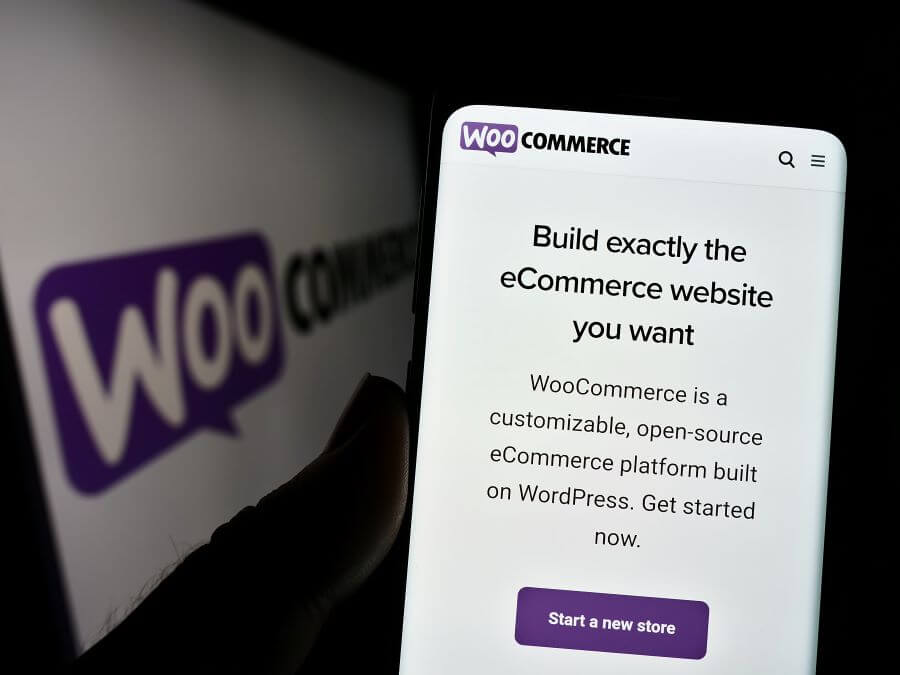WooCommerce is an open-source plugin specifically built and designed for WordPress. Its primary purpose is to turn a 'marketing' style website into an
WooCommerce is an open-source plugin specifically built and designed for WordPress. Its primary purpose is to turn a ‘marketing’ style website into an eCommerce store. Its growth since its launch in 2011 has been spectacular. As of the third quarter of 2023, the number of stores using WooCommerce increased 11% quarter over quarter.
It is renowned for its user-friendly interface and extensive features. However, there are now many more rivals that have significantly upped their game. As we rapidly approach 2024, does this pose potential opportunities or challenges for WooCommerce?
Brief History Of WooCommerce
Developed by Mike Jolley and James Koster back in 2011, WooCommerce was seen as the eCommerce solution for people using WordPress. It was instantly lorded for its user-friendly format, ability to customise and impressive range of features. Just 16 months after its launch, WooCommerce had achieved over half a million downloads, and then under five months later, this hit the million mark (Woo.com).
In 2015, it was acquired by Automatic (the company behind WordPress). Under the guidance of Automattic, WooCommerce has undergone significant evolution, establishing itself as one of the most adaptable shopping cart solutions in the industry. It boasts an extensive collection of over 400 official plugins and a diverse array of sales-oriented features.

WooCommerce Competitors
There are many alternatives to Woocommerce. ID Studio, a web design company based in London, UK, discusses this in their article ‘Should You Choose WooCommerce For Your eCommerce Store?‘.
Below, we look at some of WooCommerce’s main competitors:
- Shopify – Founded in 2006, Shopify markets itself as a complete eCommerce solution for all businesses. One of the key selling points is the easy-to-use platform and customisable themes. Their version of plugins can be obtained via the ‘app store’.
- BigCommerce– Established in 2009, one of their key selling points is scalability, which is especially beneficial for businesses looking to grow. Other key attributes include unlimited staff accounts and no transaction fees.
- Magento – Originally developed in 2008, Magento was bought out by Adobe and sells itself as a highly flexible and scalable store. Magento is usually associated with larger enterprise-grade eCommerce stores.
- Wix – Launched in 2006, Wix is a cloud-based SaaS solution with a large library of customisable templates. It is also popular due to its drag-and-drop web builder, which is great for the average customer with limited coding skills. They also provide inventory management, multichannel selling and hosting services.
- Squarespace – Starting in 2003, they offer stunning and professional templates, utilising drop and drag functionality. It has built-in eCommerce functionality, emphasises mobile-first, and provides its own hosting.
- Prestashop – Introduced in 2007, Prestashop is an open-source platform often praised for its customisable features and flexibility. It supports multi-lingual and multi-currency, providing a global reach. There is also a great community helping to support and drive forward the platform.
A Snapshot of WooCommerce’s Current Situation
Below are some key facts and figures about WooCommerce:
- WooCommerce currently powers 28% of all online stores and is the most popular eCommerce platform on the web (BuiltWith)
- WooCommerce marketplace currently has over 400 official extensions (WooCommerce, 2023)
- 20.04% of WordPress websites use WooCommerce (W3Techs)
- There are over 4600 free Woocommerce Plugins (Techreport)
- Roughly 39% of eCommerce global share uses WooCommerce (Techreport)
- In February 2023, there were 2.6million WooCommerce visitors (Techreport)
The Pros and Cons of WooCommerce
Opinions on Woocommerce vary among individuals, with some being avid supporters while others hold a negative stance. This platform cannot cater to every situation, so I will outline the key strengths and weaknesses often associated with WooCommerce.
Some of the positives include:
- Cost – One of WooCommerce’s significant advantages over virtually all other platforms is that it is free. This open-source plugin transforms your website into an online store without financial outlay. This is in stark contrast to many competitors that charge hefty upfront and ongoing annual license fees.
- Community – Another standout strength of WooCommerce is its extensive and often highly skilled community. This active network of users and developers provides a wealth of free information, help, and support, constantly adding. If you encounter a problem, you are unlikely to be the first, and a solution could already exist.
- Constant Improvements – WooCommerce’s consistent releases and updates with innovation and adaptations keep providing its users with new and updated features that improve capabilities and overall functionality.
- Flexibility – You can sell virtually anything you like on WooCommerce (apart from the few obvious items). This includes physical and digital items.
It is now time to address some of the drawbacks
- WordPress – This point depends on the individual; however, some people do not want to use WordPress, and WooCommerce is incompatible with non-WordPress websites.
- Plugins – A strength and weaknesses at the same time. Third parties develop plugins for WooCommerce. Not all of them have the best security measures in place, compromising the website’s security to hackers. In addition, some of these providers ‘disappear’, providing no support or future security updates.
- Outdated Plugins – Plugins require updates, some quite often. If they are not updated due to inexperience (no knowledge of how to perform an update) or neglect (website owner or publisher), they can become compromised and vulnerable to hackers.
- Hidden Costs – WooCommerce is free…however, there can be quite a few additional expenses. These include premium themes, additional plugins, hosting costs and external assistance for setup or updates.
- Speed – Slow-loading websites can be an issue if there are too many plugins being used for functionality enhancements. This can also cause issues with SERPs (Search engine page ranking).
Predictions for WooCommerce in 2024
The WooCommerce base system’s intended updates and enhancements are listed on the Gutenberg Times website. They are scheduled throughout the year. The primary functional improvements will be realised by introducing more advanced plugins designed to enhance the overall experience significantly for both users and website owners.
Below are some expected trends for 2024 that WooCommerce could tap into. It is presumed that this will include emerging technologies that will make WooCommerce even more flexible and customisable and further improve the end-user experience.
- Voice Commerce: allows customers to order by voice.
- Artificial Intelligence (AI): helps to generate copy and understand their customers better.
- Augmented Reality (AR): allows for better visualisation of products by the customers.
- Social Responsibility: demonstrating their commitment to social/sustainable responsibility through more eco-friendly initiatives.
- Further emphasis on Automated returns management.
- Transparency: users are becoming more aware of data collection, and businesses must allay these fears.
- Regulations & Enhanced Security: data protection and security protection will likely be enhanced due to new and stricter regulations, especially from places such as the EU.
Conclusion
WooCommerce continues to hold a strong position in the eCommerce market. The platform’s open-source nature, cost-effectiveness, and flexibility offer unique value. With the support of its thriving community and constant improvements, it’s positioned to stay relevant and robust in the competitive eCommerce landscape. The anticipated advancements, especially through plugins, will enable WooCommerce to tap into emerging trends like voice commerce, AI, AR, and more, establishing a more enriched customer shopping experience.
However, it’s essential to recognise that WooCommerce has challenges. The potential security risks associated with third-party plugins, the possible hidden costs, and the dependency on WordPress underscore the need for businesses to be careful and strategic when choosing WooCommerce. Despite these drawbacks, the platform’s strong points and potential future enhancements make it a powerful contender for anyone entering the eCommerce space or planning to scale their business. Moving forward, WooCommerce is on an upward trajectory, offering promising prospects for the future.



















































































































COMMENTS